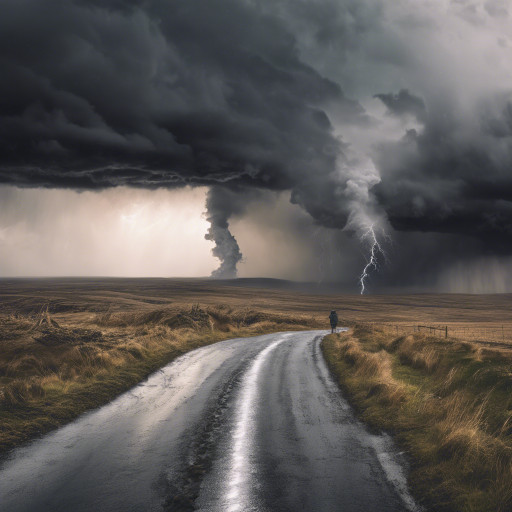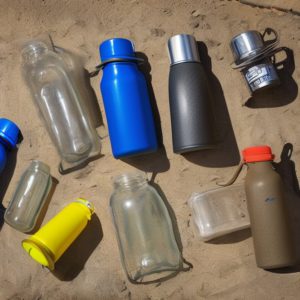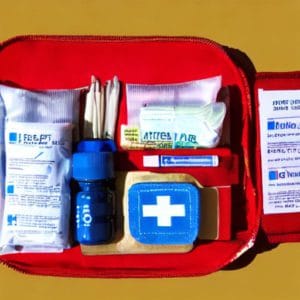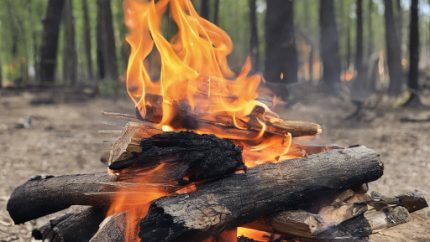Critical Survival Suggestions for Severe Weather Conditions
When it comes to extreme weather conditions, it is not a question of whether you will go through a difficult situation; rather, it is a matter of when you will. It does not matter if you are a survivalist, a hiker, or someone who seeks adventure; it is essential to be ready for anything that may come your way. Sudden occurrences of severe weather conditions can pose substantial dangers to your well-being and survival and can occur without warning.
This blog post focuses on key survival tactics that can be utilized when dealing with severe weather situations. We will provide you with the information and techniques necessary to tackle these challenges, ranging from bone-chilling blizzards to scorching heat waves. Survivalists, fasten your seatbelts and get ready to learn how to prevail over the most violent forces that nature has to offer!
Understanding Extreme Weather Conditions
One of the most important aspects of survival preparedness is having an understanding of extreme weather conditions. This gives individuals the knowledge they need to find their way through difficult environments and persevere through them. Different types of extreme weather, which can range from sweltering heat to bone-chilling cold, call for different survival methods so that people can stay alive. In order to properly manage risks, it is vital to have a thorough understanding of the complexities associated with each category.
The risk of dehydration and heat-related disorders is significantly increased in settings that are characterized by high heat and scorching temperatures. Therefore, being aware of heat exhaustion and heatstroke symptoms is of the utmost importance. In such circumstances, drinking enough water and locating a place with shade is essential. In addition, it is essential to have a solid awareness of the geology and geography of the region, as particular areas may be significantly more susceptible to the effects of excessive heat.
However, bitter cold presents a different set of obstacles than other types of cold. Because frostbite and hypothermia can be caused by prolonged exposure to low temperatures, it is vital to wear appropriate clothes and to have adequate insulation. When temperatures drop below freezing, it is necessary to construct makeshift shelters and generate heat using available resources. In order to facilitate rapid response, it is essential to recognize the early indicators of damage caused by cold.
Lightning, powerful winds, and heavy rainfall are all characteristics of thunderstorms, which is why it is important to be aware of safe shelter alternatives and lightning safety measures. In addition, it is essential to have a solid understanding of the possibility of flash floods occurring during thunderstorms, particularly in territory that is low-lying.
It is absolutely necessary for people who are going to be affected by storms to be aware of evacuation routes, emergency shelters, and the significance of protecting their property. Being familiar with the different types of hurricanes and the risks that are linked with them enables folks to make more informed judgments when they are given evacuation orders.
In places that are prone to blizzards, it is essential to be prepared for extremely low temperatures, reduced visibility, and the buildup of snow. The ability to insulate oneself from the cold and the ability to carry emergency supplies in one's vehicle are two of the most important tactics for surviving blizzard conditions.
Individuals can make well-informed decisions when confronted with difficulty when they have a full awareness of the severe weather conditions. It makes it possible to construct individualized survival plans, highlighting the significance of being prepared, adaptable, and resourceful in the face of a wide variety of environmental obstacles.

Stay Informed and Plan Ahead
When it comes to effective survival techniques in the face of extreme weather, staying informed and planning ahead are two essential components that are very necessary. Knowledge becomes a powerful instrument for limiting hazards and guaranteeing human safety in a world where weather patterns can be unpredictable and fast developing with the passage of time.
Being informed about the latest weather forecasts, advisories, and updates from reputable sources is essential. This is the first line of defense. It is possible for individuals to make educated judgments regarding their activities and to take the required measures when they are provided with advanced warning of impending extreme weather conditions. When individuals have a greater understanding of the path, intensity, and potential repercussions of weather events, they are better able to prepare for them. This provides them with the time they require to secure their houses, gather essential supplies, and, if necessary, evacuate to safer regions.
One can improve their ability to deal with difficult situations by taking preventative measures such as developing a detailed survival plan. This strategy should incorporate various components, such as identifying and labeling secure travel routes, designating emergency shelters, and establishing efficient communication mechanisms. In formulating a plan, it is of the utmost importance to consider the distinct obstacles posed by various forms of extreme weather and to design tactics to fulfill the specific requirements associated with each scenario.
The selection of travel routes must be done with caution, considering the possibility of disruptions brought on by severe weather conditions. It is important to determine the locations of emergency shelters in advance, taking into account several factors such as accessibility, safety, and the resources that are readily available. In order to guarantee dependability at crucial periods, communication procedures must be established and tested with members of the family as well as with the authorities in the area.
When it comes to severe weather, the proverb “proper planning can be the difference between life and death” is very relevant to consider. Not only does having a survival plan that has been carefully considered boost the likelihood of a favorable ending, but it also gives people who are confronted with challenging circumstances a sense of self-assurance and control over their situation. Individuals are provided with the resources necessary to effectively adapt to the dynamic difficulties that are presented by extreme weather when they take the initiative to keep informed and plan ahead. This helps individuals develop resilience and readiness in the face of uncertainty.
Dress Appropriately
It is essential to dress appropriately when attempting to survive in extreme weather conditions. This is because the appropriate clothes might be the key to maintaining body temperature and preventing illnesses that are related to the weather. The ability to make smart decisions in clothing can considerably improve comfort and safety, regardless of whether one is confronted with bone-chilling cold or searing heat.
In hot weather, it is essential to wear clothing that is not only lightweight but also breathable. The layering method is particularly useful since it enables individuals to modify their clothing according to the degree of heat they are experiencing. In these circumstances, moisture-wicking textiles are the best option since they can move sweat away from the body, which in turn promotes evaporation and cooling. Also, using lighter colors can help reflect sunlight, which in turn can assist in maintaining a lower temperature. It is essential to protect oneself from the sun; therefore, it is necessary to wear a hat with a wide brim and sunglasses in order to screen one's face and eyes from the dangers of ultraviolet (UV) rays.
 Insulation, on the other hand, is the most important factor to consider when the weather is cold. Once again, layering is beneficial, with a base layer that wicks away moisture, an insulating layer that provides warmth, and a waterproof outer shell that protects against wind and precipitation. To protect oneself from frostbite and hypothermia, it is necessary to wear a helmet, gloves, and boots that are well-insulated. Due to the fact that the extremities, such as the hands and feet, are especially susceptible to cold, it is essential to adequately cover them in order to keep circulation and warmth intact.
Insulation, on the other hand, is the most important factor to consider when the weather is cold. Once again, layering is beneficial, with a base layer that wicks away moisture, an insulating layer that provides warmth, and a waterproof outer shell that protects against wind and precipitation. To protect oneself from frostbite and hypothermia, it is necessary to wear a helmet, gloves, and boots that are well-insulated. Due to the fact that the extremities, such as the hands and feet, are especially susceptible to cold, it is essential to adequately cover them in order to keep circulation and warmth intact.
It is crucial to pay attention to the extremities that are prone to temperature-related disorders, regardless of whether hot or cold conditions are present. Protecting one's feet against burns caused by hot surfaces, for instance, is absolutely necessary when the temperature is exceptionally high. Frostbite is a condition that can affect exposed skin under cold weather conditions, particularly on the face and fingers.
A technique that is proactive in dealing with weather-related issues is to modify one's clothing selections in accordance with the particular requirements of the environment. Furthermore, the correct clothes can considerably impact a person's capacity to carry out important duties, travel securely, and endure hard situations. This is in addition to the fact that it provides comfort. Individuals have the ability to improve their resilience in the face of severe weather by gaining an awareness of the concepts of layering and selecting appropriate fabrics. This will ensure that they are well-equipped to tackle the elements head-on.
Hydration is Key
In extreme weather conditions, keeping proper hydration is essential to survival. Hydration plays a key role in both the maintenance of physical well-being and the maintenance of cognitive function. Because the human body's need for water increases when exposed to harsh environments, it is necessary for individuals to prioritize hydration as an essential component of their survival strategy.
 Dehydration is a problem that rapidly increases when the temperature is really high. The rate at which the body loses fluids through perspiration is accelerated, which can lead to potential consequences such as heat exhaustion and heatstroke in more severe situations. Because of this, it is of the utmost importance to carry a sufficient quantity of clean drinking water and to establish a practice for proactively hydrating oneself. It is impossible to overestimate the significance of drinking water on a regular basis since it not only helps to restore the fluids that have been lost but also contributes to the maintenance of a healthy body temperature.
Dehydration is a problem that rapidly increases when the temperature is really high. The rate at which the body loses fluids through perspiration is accelerated, which can lead to potential consequences such as heat exhaustion and heatstroke in more severe situations. Because of this, it is of the utmost importance to carry a sufficient quantity of clean drinking water and to establish a practice for proactively hydrating oneself. It is impossible to overestimate the significance of drinking water on a regular basis since it not only helps to restore the fluids that have been lost but also contributes to the maintenance of a healthy body temperature.
Carrying more weight in the form of water may appear to be a hardship; yet it is a little price to pay for the certainty of prolonged hydration, particularly in situations when access to water sources is available in restricted quantities. Additionally, in order to provide quick assistance, it is essential to have a thorough grasp of the symptoms of dehydration, which include dark urine, dizziness, and severe thirst.
One of the most important aspects of maintaining proper hydration is avoiding beverages that include caffeine and alcohol. Unfortunately, these drugs can make dehydration worse despite the fact that they may be attractive. Both alcohol and caffeine are diuretics, which means that they trigger an increase in the amount of urine that is produced and speed up the process of fluid loss from the body. When the weather is extremely severe, the risk of becoming dehydrated is already increased; thus, it is much more important to avoid drinking these beverages.
Not only does the quantity of water that is drank matter, but so does the quality of the water that is ingested. Adding water purification equipment or tablets to one's survival pack is a wise addition to make if potable water is in short supply. This guarantees that the water that is accessible for consumption is free of impurities, protecting against illnesses that are transmitted by water, which could make the difficulties of surviving extreme weather environments even more difficult to manage.
One of the most important aspects of surviving in severe weather is ensuring that you are always adequately hydrated. Individuals can strengthen their resilience in the face of unfavorable conditions by making preventative efforts to ensure that they have a sufficient and clean water supply. This can be accomplished by recognizing the higher demands that are placed on the body in tough situations.
Seek Shelter and Stay Warm
It is of the utmost importance to seek shelter and maintain a comfortable body temperature when confronted with extreme cold since prolonged exposure can rapidly develop into a condition that poses a significant risk to one's life, such as hypothermia. In order to survive in such hostile circumstances, it is essential to have the knowledge and skills necessary to construct a shelter and implement insulating measures.
 When confronted with a sudden blizzard or when the temperature is extremely low, the first line of defense is to seek shelter. In the absence of adequate protection, prolonged exposure to cold temperatures can rapidly drain the body's heat, which can result in hypothermia development. There is an immediate need to take action in order to locate a safe haven from the elements. Creating a makeshift shelter is an absolute necessity in the event that you become stuck. Depending on the weather, this could be anything from a snow cave in snowy situations to a debris shelter in locations with less snow. The objective is to maintain as much of the body's heat as possible while simultaneously constructing a barrier against the wind and the cold.
When confronted with a sudden blizzard or when the temperature is extremely low, the first line of defense is to seek shelter. In the absence of adequate protection, prolonged exposure to cold temperatures can rapidly drain the body's heat, which can result in hypothermia development. There is an immediate need to take action in order to locate a safe haven from the elements. Creating a makeshift shelter is an absolute necessity in the event that you become stuck. Depending on the weather, this could be anything from a snow cave in snowy situations to a debris shelter in locations with less snow. The objective is to maintain as much of the body's heat as possible while simultaneously constructing a barrier against the wind and the cold.
A resident of a snow cave that has been carved into a snowbank is protected from the biting cold by the natural insulation that the cave provides. Shelters built of debris, which can be constructed by arranging branches, leaves, or other natural objects, can provide protection in locations that do not possess snow. When building these shelters, it is essential to create a windbreak and ensure that the shelter is large enough to accommodate the body comfortably while minimizing the amount of heat lost in the environment.
Insulating oneself from the earth is another important thing to do when the temperature is extremely low. The chilly ground can swiftly remove heat from the body, increasing the likelihood of hypothermia. Maintaining one's body temperature by constructing a barrier between oneself and the ground by employing appropriate materials, such as branches or clothing, is possible. Using materials like leaves or grass between layers can efficiently trap body heat and improve insulation.
In order to successfully adapt to the obstacles that are presented by extreme cold, it is essential to have a solid understanding of the fundamentals of heat conservation and shelter design. The ability to make use of one's surroundings in order to establish a safe haven is a skill that can make a huge difference in survival scenarios. Resourcefulness is essential in these kinds of situations. Individuals can improve their chances of surviving the rigors of extreme cold by rapidly seeking refuge and employing insulation methods. This would allow them to emerge from the experience with intact health and well-being.
Prepare for High Winds
In severe weather circumstances, where gusts can pose significant hazards to humans and their surroundings, it is essential to prepare for high winds to ensure one's safety. For the purpose of successfully navigating these problems, it is vital to adopt proactive steps that prioritize personal safety and secure your local area.
Getting your campsite ready is essential when you are expecting strong winds. For tents and tarps to endure the power of heavy gusts, they must be carefully fastened to the ground. Preventing constructions from becoming airborne hazards can be accomplished through the utilization of heavy-duty stakes and additional anchor points. The tensioning of tarps and tent guylines in the appropriate manner also contributes to stability, hence decreasing the danger of damage caused by wind.
In addition to safeguarding the campsite, it is essential to do a risk assessment of the surrounding environment. Loose branches and trees that hang over the ground pose dangers during periods of heavy wind because they have the potential to become projectiles or collapse under the power of the gusts. The risk of injury and damage to property can be reduced by trimming or removing these potential hazards.
It is possible to improve one's personal safety by taking several strategic activities if caught outside during a thunderstorm, including heavy winds. It is essential to steer clear of wide areas and towering objects in order to reduce the amount of time spent exposed to the full force of the wind. Seek shelter as soon as possible, giving priority to buildings that offer a barrier of protection against the wind. Valleys and depressions are examples of natural structures that might provide some relief from the effects of strong winds.
During thunderstorms that are accompanied by heavy winds, water bodies, and metal items provide an especially dangerous situation. Regarding personal safety, it is essential to steer clear of these factors. This is because strong winds can produce turbulent conditions over bodies of water, which in turn increases the likelihood of being hit by lightning. Those close to metal objects, such as fences and poles, are at an increased risk of being struck by lightning since these objects can attract lightning strikes.
Maintaining a level of awareness regarding weather forecasts and advisories is a preventative approach that can be utilized to assist in anticipation of high wind events. Because of this knowledge, persons are able to make timely judgments regarding activities that take place outside and, if necessary, take preventative measures to ensure the safety of their environmental surroundings.
Through the implementation of these strategies, individuals have the ability to improve their resilience in the face of severe weather conditions that involve high winds. The preparation of the campsite, the evaluation of the risks involved, and the implementation of strategic actions in response to shifting weather conditions are all components that contribute to an all-encompassing strategy for survival in circumstances when high winds pose possible dangerous situations.
Fire and Heat Source
In the merciless grasp of extremely cold weather, a dependable source of heat serves as a lifeline, providing warmth as well as a means of survival. Detailed awareness of the many methods for starting fires and the inclusion of important tools and supplies in one's survival kit are both required in order to acquire the capacity to start and keep a fire, which becomes a critical skill because of the nature of the situation.
Becoming familiar with various fire-starting procedures is one of the most important steps in surviving in cold weather. A person should be knowledgeable in various techniques of starting fires, such as fire starters, flint, steel, or magnesium, in addition to the traditional usage of matches or lighters. These abilities tend to be important, particularly in challenging circumstances where traditional tactics may not succeed.
 When the temperature is exceptionally low, you must always have a lighter or waterproof match on you. Due to the presence of moisture, conventional matches might get compromised, rendering them worthless at the most crucial moment. Matches that are water-resistant or a lighter that is dependable ensure that the tools to start a fire continue to function well even when the weather is very cold or very wet.
When the temperature is exceptionally low, you must always have a lighter or waterproof match on you. Due to the presence of moisture, conventional matches might get compromised, rendering them worthless at the most crucial moment. Matches that are water-resistant or a lighter that is dependable ensure that the tools to start a fire continue to function well even when the weather is very cold or very wet.
Additionally essential is the presence of things that can be used to make a fire in a survival kit. The initial fuel that is used to start a fire is dry tinder, which can be made up of things like twigs, leaves, or bark. In addition, things like cotton balls that have been soaked in petroleum jelly are proven to be very good fire starters because they provide a flame that is maintained throughout the process of starting a fire construction. In order to ensure that these products continue to be useful, they should be stored within the survival kit in a container that is watertight.
Putting safety first throughout the entire process of creating a fire is of the utmost importance. It is possible to lessen the likelihood of the fire becoming out of control by choosing a suitable location, ideally one that is protected from the surrounding wind. When it comes to preventing wildfires and reducing the damage done to the environment, it is essential to ensure that the fire is completely extinguished before leaving.
A fire is more than just a source of heat when temperatures are extremely low; it becomes a symbol of hope, providing solace and a method of surviving in harsh conditions. The ability to start and keep a fire going is a skill that goes beyond the physical act itself; it reflects the knowledge, resourcefulness, and preparedness that are necessary to traverse the problems that come with very cold weather successfully. Individuals have the ability to dramatically improve their capacity to withstand and thrive in the face of tough environmental conditions by refining these abilities and incorporating the appropriate equipment and resources into a survival kit.
Navigation and Signaling for Help
The ability to navigate through extreme weather conditions provides its own set of problems, and it is of the utmost importance to maintain a sense of direction in order to survive at this point. In order to take preventative measures against the possibility of disorientation, individuals need to arm themselves with the information and tools essential to navigate efficiently in challenging circumstances. It is clear that a compass and various signaling devices are essential elements that must be included in any thorough survival strategy.
When it comes to ensuring that one is able to navigate effectively, carrying a compass is quite necessary. Reliance on natural landmarks or the sun becomes ineffective when visibility may be impaired due to severe rain, snow, or fog. This is because of the extreme weather conditions. However, a compass continues to be a dependable guide that offers a consistent reference point regardless of the conditions in the environment. Acquiring the skills necessary to use a compass effectively is vitally important. For this reason, it is essential to have a solid understanding of map orientation, the ability to read bearings, and the ability to compensate for declination in order to guarantee that the compass is a reliable navigating tool.
Signaling devices, in addition to a compass, play an important part in survival scenarios, particularly when attracting attention or signal for assistance is essential. In order to draw people's attention to your presence, a whistle is a tool that is both small and powerful, and it can be carried across great distances. As a result of its high-pitched sound, which is easily distinguishable and has the ability to cut through background noise, it is an efficient method of communication. Through the employment of a mirror, ideally one that has a viewing notch, it is possible to send a signal to rescuers who are located at a distance by reflecting sunlight in their direction. Light flashes that are really brilliant have the ability to draw attention from a considerable distance away. One other technique of visual signaling is to carry a flag or a piece of cloth that is brightly colored. It is possible to boost visibility by waving it or displaying it prominently, which both help to attract attention from a distance.
The ability of an individual to navigate and communicate effectively in adverse weather circumstances is improved when these tools are included in a survival kit that has been adequately prepared. When used together, a compass and signaling devices offer a multi-faceted approach to tackling the issues of disorientation and the requirement for assistance from outside sources. This is in addition to the individual benefits that each of these devices offers. By fostering self-reliance and increasing the possibility of a speedy and successful resolution in the face of hardship, this combination has the potential to be invaluable.
Prepare an Emergency Kit
When it comes to preparing for and overcoming the obstacles that are presented by extreme weather conditions, having an emergency survival pack that is in good condition and well-equipped is essential. By ensuring that individuals are prepared for urgent needs and armed with the tools essential for prolonged well-being in circumstances that are highly unpredictable, this carefully curated assortment of products ensures that individuals are prepared.
 Any survival kit should always include a first aid kit as one of its primary components. In the event of severe weather, it is possible that injuries will occur more frequently, and it may be difficult to obtain medical aid. Bandages, antiseptic wipes, pain relievers, and any drugs that have been prescribed are examples of vital medical supplies that should be included in the package. Because of this, it is possible to swiftly address fundamental medical needs, reducing the likelihood of complications.
Any survival kit should always include a first aid kit as one of its primary components. In the event of severe weather, it is possible that injuries will occur more frequently, and it may be difficult to obtain medical aid. Bandages, antiseptic wipes, pain relievers, and any drugs that have been prescribed are examples of vital medical supplies that should be included in the package. Because of this, it is possible to swiftly address fundamental medical needs, reducing the likelihood of complications.
In extreme weather conditions, where it is essential to maintain a dry and warm environment in order to survive, it is essential to have additional clothing. This consists of layers that are insulated, outerwear that is waterproof, and footwear that is sturdy. The items of clothing that are selected ought to be adapted to the particular climate, considering elements such as the wind, the precipitation, and the temperature changes.
Tools for lighting fires, such as matches that are waterproof, are necessary for both the creation of warmth and the preparation of food. Increased adaptability in various circumstances can be achieved by utilizing a multifunctional tool that combines functions such as cutting, sawing, and opening bottles. Because it combines a number of different functions into a tiny and portable shape, this multipurpose tool proves to be extremely useful when confronted with unexpected obstacles.
Food rations are absolutely necessary in order to maintain one's energy levels during times of emergency. Energy bars and freeze-dried meals are two examples of compact and nutrient-dense solutions. These options also give needed sustenance without adding any unwanted weight to the kit. In addition, water purification pills are of similar significance because they guarantee a trustworthy and risk-free source of drinking water. It is possible that access to clean water will be restricted in exceptional circumstances; therefore, these pills are a crucial component.
It is necessary to have a trustworthy torch to keep one's visibility intact in low-light settings or when severe weather conditions are present. Invest in a torch with a long battery life or an alternative powered by solar energy. In addition, ensuring that electronic gadgets continue to function properly requires the inclusion of spare batteries or a portable charger.
In order to maximize the efficiency of the survival kit, it is essential to personalize it according to the present environmental circumstances. Hand warmers, thermal blankets, and snow goggles are some examples of supplementary things that may be necessary when the temperature is extremely low. On the other hand, in hot areas, it is possible that more important things to bring are things like sunscreen, a hat with a wide brim, and supplements that restore electrolytes.
An emergency survival kit that is well-stocked with essential items is a proactive investment in one's own personal safety and resilience. It is possible for individuals to face adversity with confidence, knowing that they have the essential tools at their disposal to navigate and overcome the uncertainties of their surroundings if they carefully analyze the potential problems that could be offered by extreme weather conditions and customize the gear accordingly.
Mental Fortitude
A combination of physical strength and mental fortitude is required in order to survive environments with extreme weather conditions. The ability to weather the storm, both literally and figuratively, is contingent on keeping one's cool, making decisions with a clear head, and being unyielding in one's determination. Although the physical preparations are essential, survival's psychological side is equally important because it determines how individuals react when confronted with adversity.
The first and most important piece of advice that can be given in the midst of difficult situations is to maintain your composure. Panic is a tough foe that impairs one's capacity to think sensibly and clouds judgment due to its cognitive interference. The ability to remain calm enables individuals to make a more precise evaluation of the circumstances, which in turn enables them to choose their priorities and develop survival strategies that are more effective. In order to effectively apply other survival skills, it acts as the basis upon which those skills might be built.
An evaluation of the current circumstances is the next essential step. It is vital to understand better the immediate dangers, the available resources, and the possible courses of action. With the support of this analytical method, individuals are able to make judgments that are informed and based on the reality of their circumstances. In order to formulate an effective response, it is essential to comprehensively analyze the circumstance, regardless of whether it is intense heat, terrible cold, or an unexpected storm.
One of the most important aspects of surviving extreme weather conditions is setting priorities for certain actions. Being aware of what needs immediate attention and what can be addressed later is a skill that can be the deciding factor in whether or not one is successful. A few examples of things that could take precedence over other issues include establishing shelter and ensuring a reliable supply of heat.
A crucial weapon in the survival toolkit is the ability to keep a positive outlook on a consistent basis. Having a positive viewpoint helps to cultivate resilience, which in turn adds to adaptation and problem-solving abilities. It gives people the ability to approach issues with confidence that they can overcome them, which reinforces the notion that they can triumph over adversity. A positive mindset can serve as a beacon of hope in the face of harsh weather conditions, where the environment itself might be intimidating. It can inspire perseverance and innovation in the face of hardship.
The ability to concentrate on a survival strategy that has been carefully considered is another crucial component of mental fortitude. Actionable steps can be mapped out with the help of a meticulously constructed plan that was developed in advance and modified in response to the changing circumstances. It acts as a source of guidance, lowering uncertainty and providing a sense of control in a situation that would otherwise be unpredictable.
Surviving extreme weather conditions is an endeavor that requires a comprehensive approach that blends mental fortitude with physical readiness. Maintaining a positive mindset, analyzing the situation, prioritizing actions, and adhering to a well-defined survival plan are all components of a complete strategy for overcoming the challenges that are presented by nature's extremes. It is possible for humans to tolerate terrible weather circumstances and emerge from them with a heightened sense of capacity and drive if they combine their mental and physical power.
The ability to endure severe weather conditions is not for those who are easily discouraged. Not only does it require planning and endurance, but it also requires the capacity to adapt to constantly shifting conditions. You can equip yourself with the information and abilities necessary to prevail over the most severe effects of the elements by first gaining an awareness of the nature of the weather conditions that you can experience, then remaining informed, and then putting into practice the vital survival techniques that are detailed in this blog post.
Preparing for Civil Unrest: Essential Strategies
Exploring the Root Causes of Civil Unrest for Effective Preparedness Preparing for Civil Unrest: Understanding the multifaceted causes of civil unrest is essential for effectively preparing for such events. The tensions within society often arise from a complex mixture of economic, political, and social factors. By examining these root causes in detail, individuals can gain […]
Flood Preparation Steps: Essential Actions for Safety
Comprehensively Understanding Flood Risks for Enhanced Safety Flood Preparation Steps: Floods are among the most catastrophic natural disasters, affecting millions of people worldwide each year. A comprehensive understanding of flood risks is essential for both urban and rural communities. By closely evaluating where floods are likely to occur and assessing their potential severity, residents can […]
Survival in Tundra: Essential Tips and Strategies
Exploring the Extremes of Tundra Environments Survival in Tundra: The tundra represents one of the most severe and fascinating environments on our planet, distinguished by its frigid climate, brief growing seasons, and distinctive ecosystems. Gaining a comprehensive understanding of these ecosystems is essential for anyone determined to thrive in tundra conditions. Primarily, the tundra can be categorised […]
Surviving a Dust Storm: Essential Safety Tips
Comprehending the Dynamics of Dust Storms Surviving a Dust Storm: Dust storms present a significant natural phenomenon that can arise unexpectedly, creating major challenges for individuals caught in their trajectory. It is essential to recognise and comprehend these storms, particularly for those residing in regions prone to their impacts. This is especially true in dry […]






